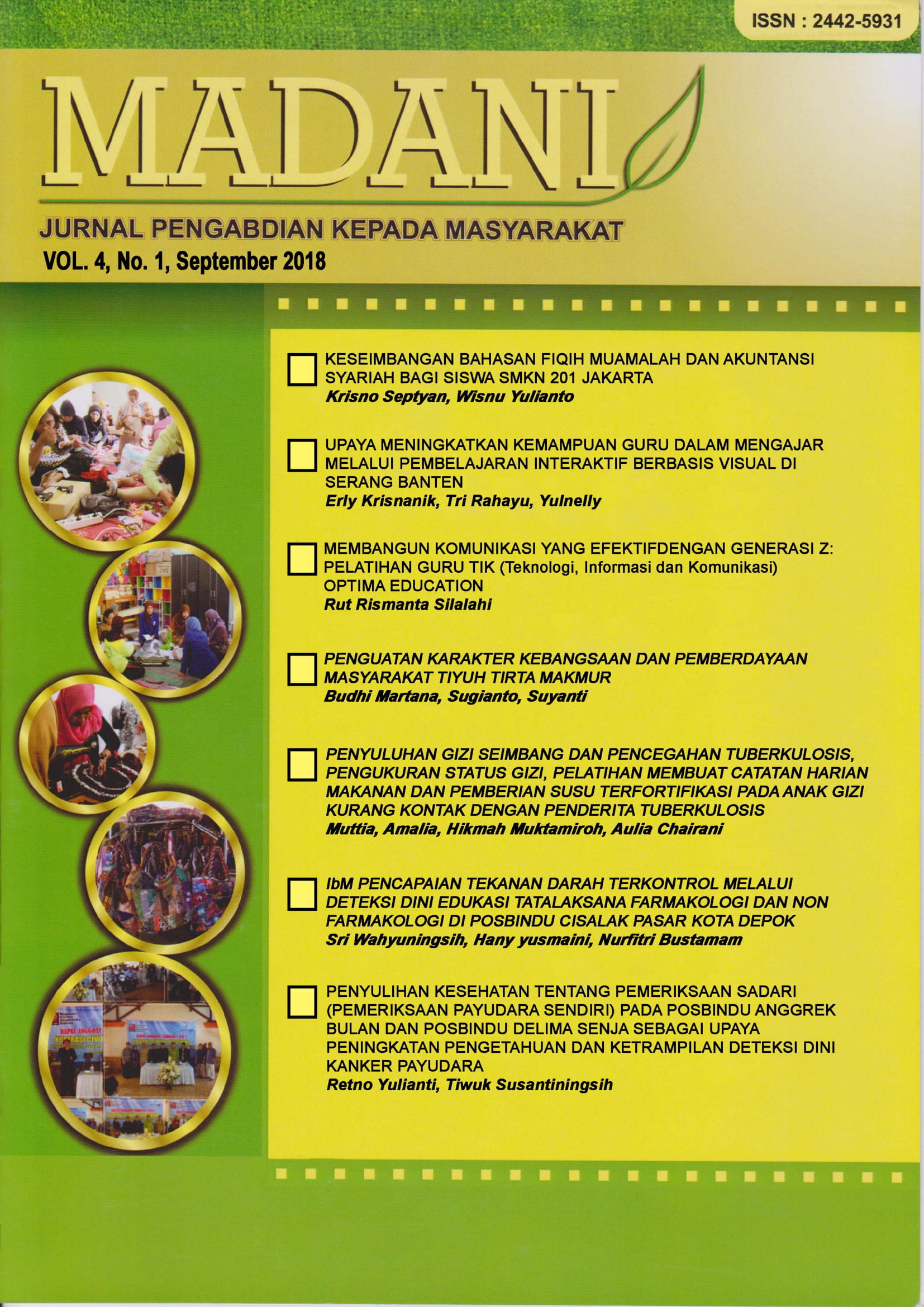IbM PENCAPAIAN TEKANAN DARAH TERKONTROL MELALUI DETEKSI DINI EDUKASI TATALAKSANA FARMAKOLOGI DAN NON FARMAKOLOGI DI POSBINDU CISALAK PASAR KOTA DEPOK
DOI:
https://doi.org/10.53834/mdn.v4i1.417Abstract
Hypertension is a health problem that is still found in many first-rate service facilities. Hypertension cancause damage to various vital organs if it is not detected early and gets adequate treatment. Control of blood pressure in hypertensive patients is still inadequate even though effective drugs are available. At the Cisalak Pasar Health Center, there were high visits of hypertensive patients and a number of patients who had not been obedient to routine control and taking medication as recommended. The results of blood tests and EKG on the previous examination found 14.29% of hypertensive patients had kidney problems. This activity aims to detect the presence of target organ complications and increase knowledge about rational drug use, control and regular exercise as an effort to control hypertension. IbM activities are carried out through blood and ECG examinations and counseling about rational use of drugs and exercise for hypertensive patients. The results of laboratory tests found that a
number of patients experienced an increase in a number of parameters, namely 37.93% increase in cholesterol, 27.59% increase in triglycerides, increase in LDL 68.97%, increase in urea 20.69%, and creatinine increase of 26.47%. ECG results showed cardiac abnormalities in one patient (2.94%). The average score of sports knowledge for hypertensive patients increased after counseling, before a score of 4.7 to 6.27. The pattern of drugs used by patients from Puskesmas is mostly single drugs. Most patients still consume fatty and salty foods. However, there are many patients who consume vegetables and fruits, reduce preserved foods, regularly check blood pressure, and have ideal body weight to achieve controlled blood pressure. The results of IbM found an increase in knowledge and changes in the behavior of hypertensive patients to achieve controlled blood pressure, although some patients
who had kidney and heart problems were found.
References
Bolivar, J.J. 2013. Essential Hypertension: an approach to its etiology and neurogenic pathophysiology. International Journal of Hypertension. Departemen Kesehatan. 2006. Pharmaceutical Care untuk Penyakit Hipertensi.
Hedayati, SS dkk. 2011. Non-pharmacological aspects of blood management; what are the data? Kidney International: 79: 1061-1070 Joint National Committe 7. 2003. The Seventh report of The Joint National committe on prevention,
detection, evaluation, and treatment of high blood pressure. NIH Publication No. 03-5233. Joint National Committe 8. 2014. JNC 8 guidelines for the management of hypertension in adult.
Kementrian Kesehatan Republik Indonesia. 2014. Hipertensi. Pusat Data dan Informasi Kementrian
Rahajeng, E dan Tuminah, S. 2009. Prevalensi Hipertensi dan Determinannya di Indonesia. Majalah Kedokteran Indonesia. Volume: 59, Nomer: 12. Desember 2009
Ridjab, Denio A. 2007. Modifikasi Gaya Hidup dan Tekanan Darah. Majalah Kedokteran Indonesia. Volume: 57, Nomer: 3, Mei 2007
Woolf, J Kevin dan Bisognano, John D. 2011. Nondrug Intervension for Treatment of
Hypertension, The Journal of Clinical Hipertension, 13 (11). November 2011
Downloads
Published
Issue
Section
License
CC BY: This license allows reusers to distribute, remix, adapt, and build upon the material in any medium or format, so long as attribution is given to the creator. The license allows for commercial use.








